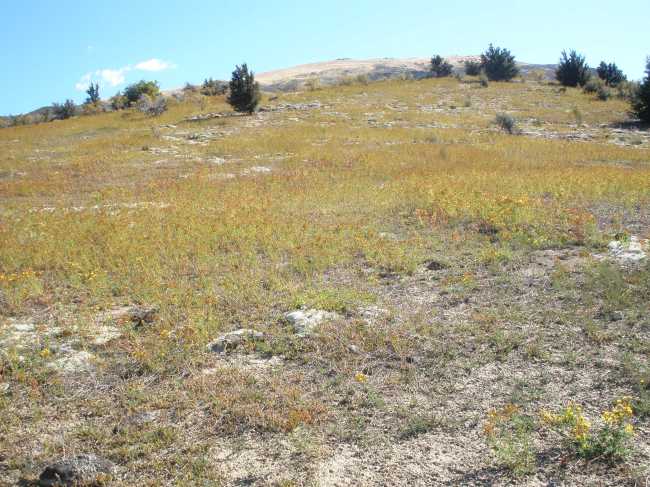 ‘Viriditas – Inscape Projects’
‘Viriditas – Inscape Projects’
March 26th, 2013
It is an early morning in late March, the mountains ridges cut out sharply against the sky, the air is crisp and cool. Deciduous trees are starting to colour, it feels like Autumn. There is some trick of vision here, I have trained myself to ‘see’ in a Goethean§ way, the blues through purple out of dark to light and the yellows through red from light to dark. My eyes are deceiving me in this early morning light for the prism tells me the opposite. (See Resources for reference to this way of seeing).
To the south where the new ‘Viriditas’ land is, it is sunny already. I can’t wait.
This ‘Viriditas – Inscape Projects’ Blog will be an account of the journey with this land as my teacher, the earth inspired building and combination vegetable and food forest. I have had many amazing human teachers but now I am listening to a different voice and rhythm.
It will include the process as it evolves, the people, the information, the plants, the recipes, the resources. I know there are many out there who are working on similar projects, please add your experiences and information – especially as I make big decisions such as what energy systems to use.
The Process
First visit- immersion
“I am on the edge of a precipice, it is a long way down, dark, unknown, scary, awe inspiring, whisperings, a quiet that is both wild and still, calming and energising at the same time, rocky tors that are older than life, a presence powerful, seductive.”
I see rosehips ripe from a hot sun, vast areas of St John’s Wort, mullein, horehound, burdock, – yellow dock, bush lawyer, the native bidi bidi, mature Kanuka, fathen, mignonette, and moth mullein. Nearby I find Roman chamomile and a wild lettuce species. (Botanical names are in the resources). I see tufts of a rounded spongy plant and prickly, thorny coprosmas. Dry earth, rabbits holes and pellets, a NZ Falcon circles.
Water is running on both streams that almost define the boundaries of this approx. 14
Hectares. The pond on the 1 hectare of flat is almost dry. Thistle down fills the air they will be the biggest challenge here on this flat disturbed part of the land.”
Notes to self
- I make a mental note to ask the guys at the Luggate pub when to plant Lucerne – Alfalfa. I read in Martin Crawfords book♣ that it is a beneficial way to begin a forest garden. It can be left to grow, doesn’t need to be mown, nourishes the soil as a nitrogen fixer and reduces unwanted plants. The locals say it can be sown at the end of March if it rains but best to wait until October. I should prepare the ground now though they say.
- How come the pond is nearly dry when its neighbour through the fence is full?
- What about those apricots that are falling on the ground next orchard?
The iconic stone Luggate Pub is a welcoming place, always someone who wants to talk and I have so many questions. The local extract of Vitis vinifera as Pinot Noir is great also.
Plants
St John’s wort – Hypericum perforatum Mullein – Verbascum thapsus
Horehound – Marrubium vulgare Burdock – Arctium lappa
Yellow dock – Rumex crispus Fathen – Chenopodium alba
Tataramoa – Bush lawyer – Rubus cissoides
Piripiri -Native bidi bid- Acena novae-zelandiae
Kanuka – Kunzea ericoides
Roman chamomile – Anthemis nobilis Wild lettuce – Lactuca ssp
*Moth mullein * – Verbascum blattaria
Mignonette
*I read a well referenced piece in Wikipedia that;
“… a study conducted in 1974 reported that when a number of mosquito larvae were exposed to a methanol extract of moth mullein, at least 53% of the larvae were killed. V. blattaria has also long been known to be an effective cockroach repellent, and the name blattaria is actually derived from the Latin word for cockroach, ‘blatta’”.
I wish I had known that when I lived in Gisborne IB
Resources
Books
§ J W von Goethe (1749-1832) combined the “…intuitive awareness of art with the rigorous observation and thinking of science.”
Seamon D., and Zajonc A. Goethe’s Way of Science. A
Phenomenology of Nature.StateUniversity of New York Press 1998.
Bortoft H., The Wholeness of Nature. Goethe’s Way of Science. Floris Books, 2007.
♣ Crawford M. Creating a Forest Garden Working with Nature to grow Edible Crops. Green Books, 2012

Sounds great Isla, am interested in doing something similar in the next few years so will follow your journey with interest. Thanks for sharing.
You are making me homesick Isla, I myself have spent some time living in Central Otago, had a lovely cottage house with the iconic 1/4 acre section in Cromwell at one point in my life, a bounty of stone fruit trees in the back yard etc. The local Pinot Noir is the best in the world (my Australian friends think I’m extremely biased 🙂 ). As a central otago expat and herbalist, I will follow your journey with much appreciation and interest.
Cheers
Karen Cashmore
Perth
Isla, I read with great interest your Inscape writing, it helps me connect to my own, here, so far away! You apricot picture reminds me of the peaches we did last year, so so delicious. Will miss seeing you this year .. and looking forward to the New Zealand learning journey!!! Warm regards, ~b.